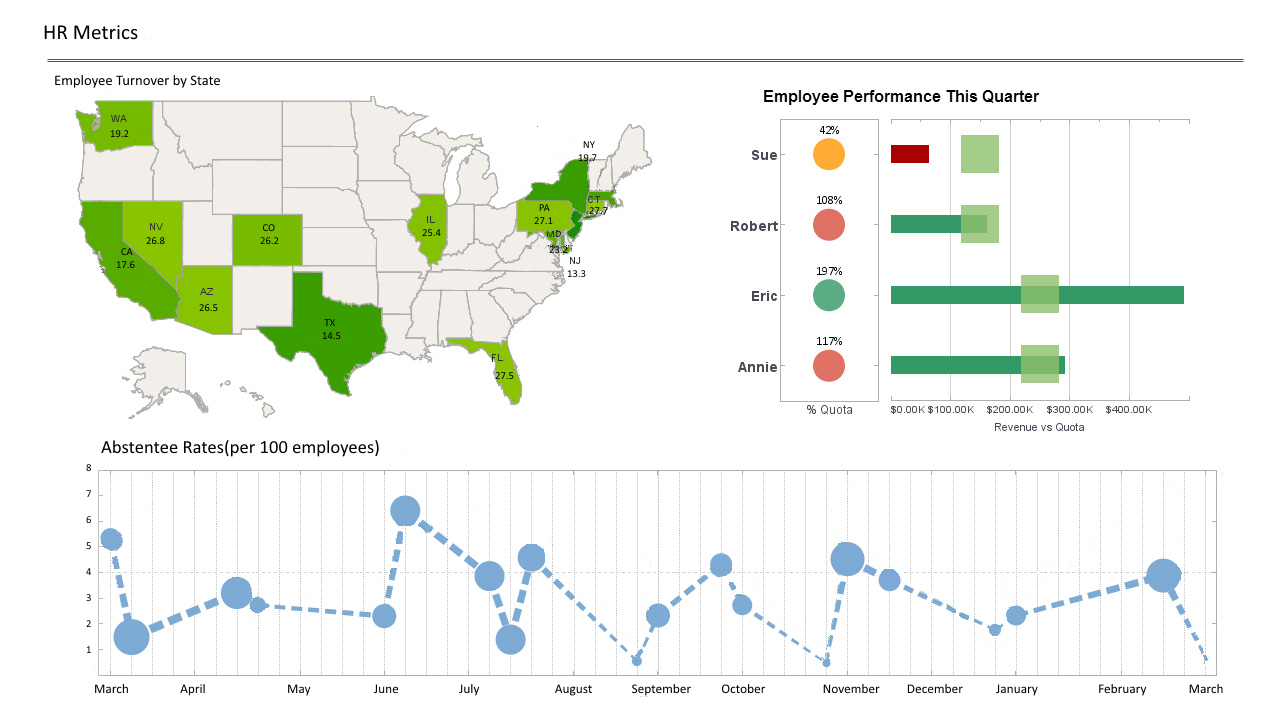Improving Business Agility Using Corporate Performance Management Software
This is the transcript of a Webinar hosted by InetSoft on the topic of "Improving Business Agility Using Performance Management Software." The speaker is Mark Flaherty, CMO at InetSoft.
Welcome to our Webinar on “Improving Business Agility Using Performance Management Software.” I will be your moderator for this Webinar. But before we get to the topic, let’s get some simple housekeeping items out of the way. First, this event is completely interactive, and we do mean that. It incorporates many social networking tools that enable you to tweet or directly post information to your Facebook and/or LinkedIn page right from the console.
You don’t have to change consoles to do that or go to the Internet. You can do it straight from the console. Just scroll along the bottom of the screen and click on the social networking widget of your choice and have fun with it. We encourage you to do so.
Also if you have a question, please don’t be shy. Hit the ‘Ask a Question’ button located on your console and we will get to your question during the event or during the live Q&A at the end of the event depending on how much time we have.
| #1 Ranking: Read how InetSoft was rated #1 for user adoption in G2's user survey-based index | Read More |
We will answer as many questions as possible so please we invite you ask away and ask often. Also you can download a copy of today’s presentation to your desktop so you can go ahead and do that as well. In addition, there are few cool and customized functions to be aware of. There’s a group chat widget so click on that if you want to start or participate in a group chat, and every window you currently see and that’s from slide window to the Q&A pane, they need to be enlarged or collapsed. So if you want to change the look and feel of your console, go right ahead and do so. Finally, there will be some polling questions sprinkled throughout this Webinar. We encourage you to participate in these polls. So please when you see them pop up, go ahead and vote on the most appropriate response, and we will share the overall results with you at some point here in the broadcast.
Now, let’s get to today’s topic which is why you are all here. A company is only as agile and flexible as its decisions. Companies can be at a tremendous disadvantage in an always-on, real-time world if they can’t gather the right customer data, store it efficiently, access it easily and apply it for real time decision making. In order to be competitive, data today must be actionable, or it’s just taking up space. Information must be able to be used equally by business processes across sales, marketing, finance and operations to make immediate business decisions. Here is where decision management comes into play. But where do you start?
How Do Evaluate Your Organization's Business Analysis Tools?
How do evaluate your organization’s business analysis tools, its technologies and even the businesses processes as candidates for automating? Before I turn it over to our speaker, let’s roll out our first audience polling questions. Do you believe your organization is effectively utilizing all the data it is receiving to make that business decision? Simply yes, no or you’re not sure. And while you vote on that poll, it’s my pleasure to turn you to our speaker, Mark Flaherty, CMO at InetSoft.
Thank you, Michelle. To build on your introduction, yes, we live in an ocean of data these days. You might say there’s lots of data and but not enough decisions being made. And I think, when you look at why you invest in IT, why you invest in technology, I think your CEO would say it’s to make better business decisions. So I’m going to start off with just a little bit of an overview by taking a look at what I call the path to business agility. And I start off by saying what decision making is, with or without computing, it’s really a three step process. You have to gather the information. You have to analyze the data. And you have to act.
 |
View a 2-minute demonstration of InetSoft's easy, agile, and robust BI software. |
Now, it seems simple to put three things in the list. It’s not that simple to do in reality. I think anyone who lived through the world of business intelligence and automatic decision processing knows that it gets pretty tricky once you get into it. But remember those are the three steps you have to take, and really what’s layered on top of that right now is sort of what I call the digital enterprise. So let’s take a look at a couple of the changes to that model that enterprise requires. So in the digital enterprise, which you know we’re all pretty much in these days. I don’t think any of us is not in it.
| Next: Data Management of Multiple Data Sources Has Become Complex |


